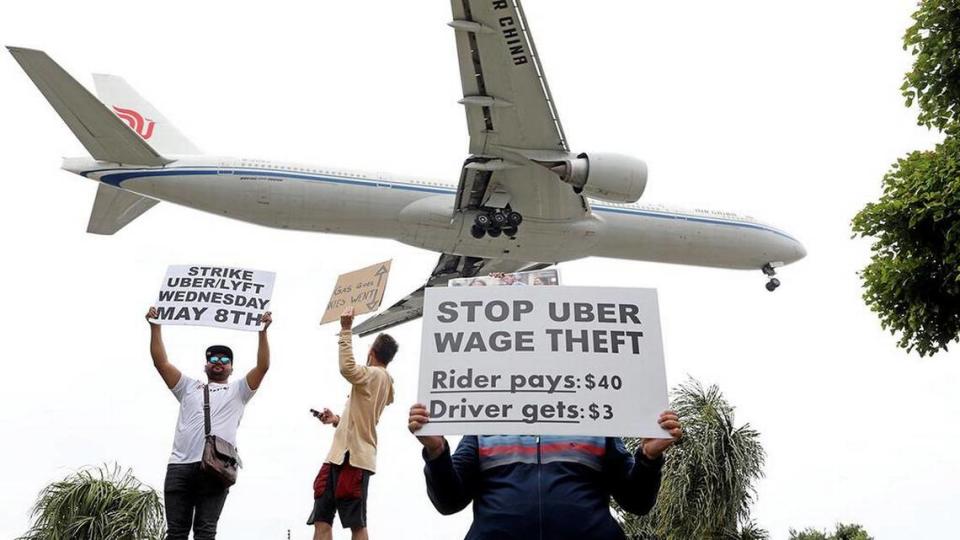Want to make less than minimum wage? Drive for a California rideshare company | Opinion
The California Supreme Court recently heard oral arguments in a case that could invalidate all or part of Proposition 22, the 2020 ballot measure that addressed working conditions for rideshare drivers in the state who are part of the new “gig” economy. The court’s decision, expected by the end of summer, could reopen hotly contested policy debates over fair pay and benefits for California’s hundreds of thousands of gig delivery and passenger drivers.
Such discussions require reliable data. We recently released an analysis of over 52,000 delivery and passenger trips by over 1,000 drivers in the San Francisco, Los Angeles, Boston, Seattle and Chicago metropolitan areas. It’s the most comprehensive independent study of working conditions yet to be done in this industry.
Our evidence shows that drivers are making well below the applicable minimum wage in each of these urban areas. Many California voters thought they were improving the lot of drivers by passing Prop. 22. They were mistaken and possibly misled.
Opinion
Our research accounts for all of the drivers’ time at work and all their expenses. In each metro area we studied, drivers earn well below the minimum wage. In California, for example, rideshare passenger drivers for companies like Uber and Lyft take home $7.12 per hour in median net hourly earnings before tips — a fraction of California’s $16 minimum wage. Tips only add another $2 an hour. By comparison, drivers in the other regions we studied averaged $10.62 per hour – better, but still not a living wage in any major U.S. city-- and below the minimum wage in each of the cities we studied.
When we account for all the employee benefits and taxes which drivers, as independent contractors, must pay for themselves, California Uber and Lyft drivers took home an average of $5.97 per hour before tips. Pay for delivery service drivers for companies like DoorDash was even lower.
When voters passed Prop. 22, data of this sort was not available. In the intervening years, other approaches to raising driver pay, such as New York City and Seattle’s minimum compensation policies and a law enacted in Minnesota just this week, show that the industry can indeed pay drivers a higher wage when required by law.
The app companies claim that the drivers should not be paid when they are between trips. But when drivers return to hubs from outlying areas and wait for offers, they are performing an important service for the companies: they are making themselves available on very short notice for a ride or delivery. They should be paid for all their time working.
The app companies also claim that most drivers work only a few hours per week, so their expenses consist only of refilling their tanks. But most of the trips are made by drivers who work 20 or more hours per week and drive upwards of 10,000 or 20,000 miles per year. Their vehicles are experiencing wear and tear and will need to be replaced. These drivers’ expenses include the cost of replacing their cars, as the Internal Revenue Service recognizes when it sets standard employee reimbursement rates for business use of personal vehicles.
Our study suggests a course correction is needed if gig drivers are to enjoy the protections that California has enacted for all the state’s workers. Unfortunately, Prop. 22 mandates that a 7/8ths majority of the California legislature is required to make any changes to its provisions. That is, by design, a hurdle too high to clear.
The industry is currently pursuing Prop. 22-type ballot initiatives in several other states. California’s example should serve as a warning to voters here and elsewhere of the dangers of allowing corporations to write the laws that govern their industries. Workers are losing, and the government can no longer step in to help them.
Ken Jacobs is co-chair of the Center for Labor Research and Education at the University of California at Berkeley. Michael Reich is an economics professor at UC Berkeley and co-chair of its Center on Wage and Employment Dynamics.




